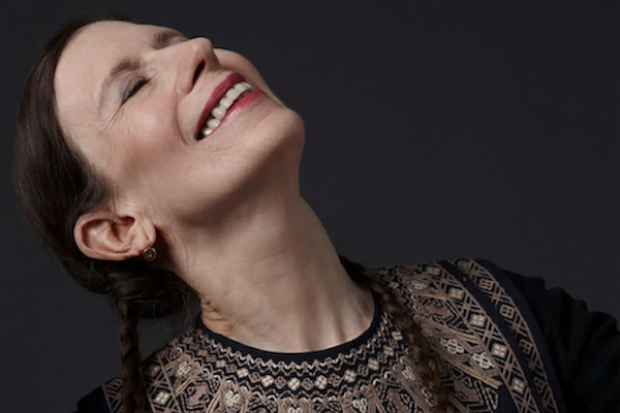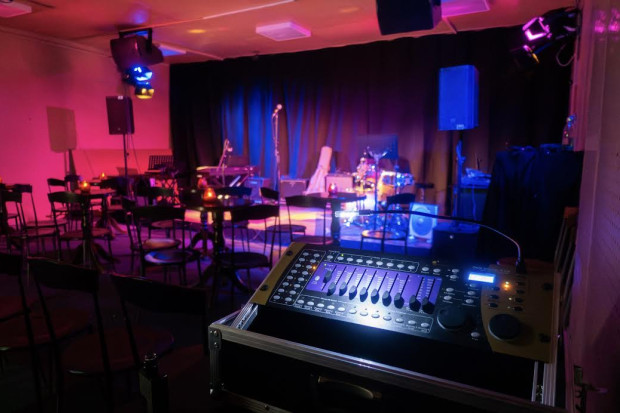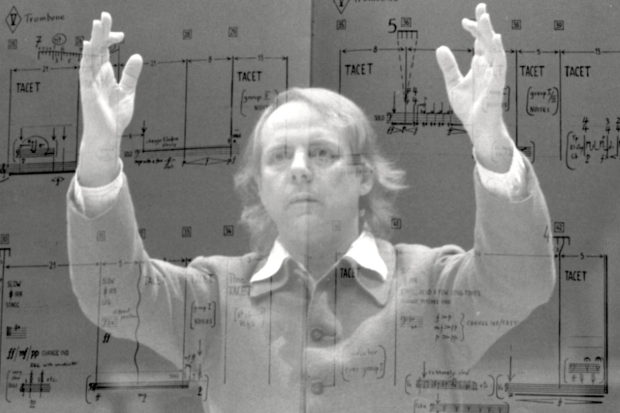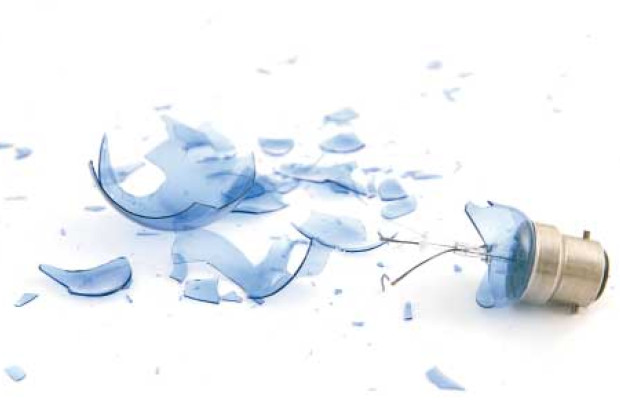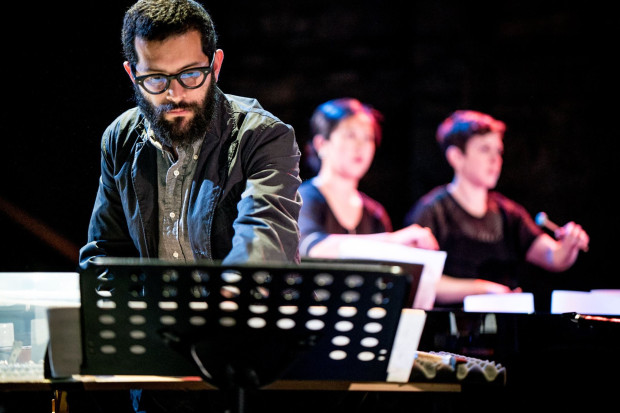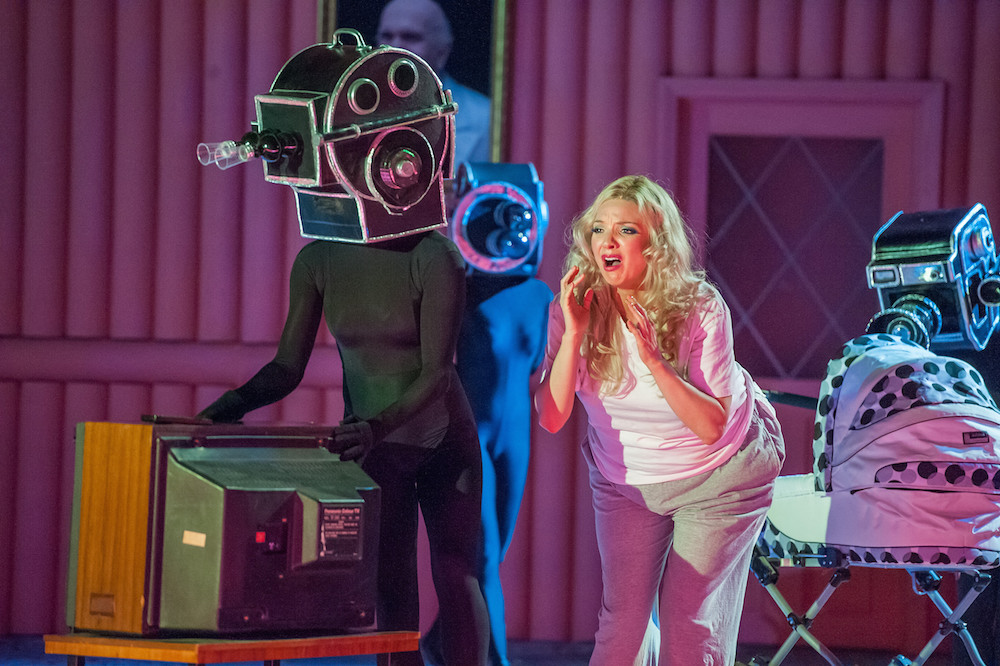
Mark-Anthony Turnage’s ‘Anna Nicole’.
Grappling with Diversity
To some readers, ‘the Fall’ is the legendary fall of man; the moment when humankind’s simple animal life within nature was replaced by the acquisition of ‘knowledge’ and ‘free will’ – the discovery of good and evil, the casting out from paradise. In his new book, Music After the Fall, new music critic Tim Rutherford-Johnson mentions it only as the fall of the Berlin Wall: the ‘end of history’, the apparent, possibly temporary, triumph of capitalism over statism. The subtitle – ‘Modern Composition and Culture Since 1989’ – tells us the real subject.
In relaxed and readable prose, Rutherford-Johnson describes in detail how pieces of new music might be received, experienced or understood by a general audience, without any need for a background in musical training. When analysis is applied, it is to the cultural and sociological background to the music. 1989 is chosen less because of the defeat of the command economies in the East and more for the change it signalled in the West: the turbo-charging of capitalism and the widespread erosion of social democracy, the trickle-out of personal material insecurity and with it a new social and psychological fluidity.
The more substantial part of Music After the Fall, however, is the reportage itself. From the start the reader is thrust into descriptions of performances, from Bang on a Can marathons [Note: videos of all pieces mentioned in this article can be found below] to Alvin Curran’s Maritime Rites; or of textual and cultural elements in various pieces of music and sound art, from Lisa Bielawa’s (b. 1968) Tempelhof Broadcast, written for a park that was previously an airfield, to Ross Bolleter’s (b. 1946) ruined pianos project. Often, as with works from Seth Kim-Cohen (b. 1964) and Ellen Fullman (b. 1957), we are given the composers’ intentions and sometimes instructions to the performer without consideration or any critique of how effective that composer has been in realising intentions. Perhaps it is a given that if a piece is included, it works well in that regard, but we are never sure of that.
Rutherford-Johnson weaves these descriptions effectively into an interesting and reflective discussion of the cultural context that suits the work in question, returning again and again to reportage of/from musicians, performance settings, modes of creation, and other cultural contexts. The book covers a massively broad range of creative musical approaches and techniques and from this point of view is an impressive and useful volume, as a primer to students and practitioners alike, on what is going on today and how we got here.
Disturbing
Music After the Fall begins by throwing the reader off balance, starting in with raw description of the pure sounds, without other information, from five examples which seem quite randomly chosen. It is disturbing, because most readers will wonder why these completely different five have become bedfellows. That is the idea. To get the problematic diversity of contemporary practice out of the way early on, and establish that we really need the missing context. The examples are Reich’s Different Trains (for string quartet and tape); Ustvolskaya’s Piano Sonata No. 6; Kits Beach Soundwalk (an environmental tape piece) by Hildegard Westerkamp; Brain Forest – for Acoustic Metal Concrete, an album track by Japanoise artist Merzbow; and H’un (Lacerations), an orchestral work by Bright Sheng. They are only together because they happened in the world within the same narrow time frame, 1988–1990. Corralled together, here and in the rest of the book, are huge differences in medium, method, intention, and the degree to which the works were ‘scored’ or ‘composed’.
At the end of this introductory chapter, the author at last sets out the plan and the rationale for the rest of the book. He suggests that
the main developments of the last twenty-five years that might enable or inspire the stylistic development of new music are social liberalization, globalization, digitization, the internet, late capitalist economics, and the green movement.
He immediately allows that there may be others, and indeed that some of those will appear later.
That kind of qualification and on-the-fly adjustment is typical of the way the author puts things together. He is reluctant to lay things down categorically and often seems to provide multiple viewpoints even if they clash. This is done mostly in an engaging and convincing way, which either chimes in with the messy diversity of the times he is discussing, or indicates that he has been swept up in the post-modern aesthetics himself and can’t decide a coherent position (perhaps the multiple viewpoint tendency is catching).
The positive side of this is that he brings the reader a certain distance, and then implies choices in how to carry on. His prose often sounds conversational:
What might unite the five examples given above, then, apart from the coincidence of when they were created? Does their diversity tell us something about the end of the 1980s, or does the turn of the decade provide clues as to how to consider all five works alongside each other? A bit of both, I think. This is not meant to be the fudge it sounds like. Cultural history works in two directions: works of music, or any other art, are both products of their time and contributions towards it. That is to say artists invent new things as much as they respond to existing ones.
He fleshes that out at length with a discussion of how both personal history and technical development led up to the writing of Different Trains.
From Permission to Recovery
After two scene-setting sections – ‘1989 and After’, and ’ Mediation and the Marketplace’ – the writer explores more examples through abstract headings as follows: ‘Permission’, ‘Fluidity’, ’Mobility’, ‘Superabundance’ and ‘Loss’, then finishes with a final section, ‘Recovery’. This flexible and sometimes idiosyncratic approach allows for composers, who do not always belong together acoustically, to be treated together under a less obvious commonality in their worldview, reception or some aspect of method – allowing him to see, for example, a link between Enno Poppe’s micro-variation technique and the early Philip Glass piece Music in Fifths. It is not a continuation of the deliberate randomness of the opening examples. In fact, Rutherford-Johnson provides often fascinating and revealing connections, sometimes straightforward but worth noting, such as bringing together the diverse composers yoked together in the 1980s marketing explosion of classical music (such as Bryars and Pärt) or noting how Messiaen seemed to be included at first in the marketing of spiritual minimalists (with Gorecki and Tavener); and sometimes deeper and more revealing insights, such as commonalities and important differences in how borrowed audio recordings have been ‘translated’ into new works by, for example, the Austrian composer Peter Ablinger (b. 1959) and the American Richard Beaudoin (b. 1975).
Besides those section headings, there are numerous friendlier sub- and sub-sub-headings (such as ‘Noise and Silence’, ‘fluid forms’ or ‘the specialist performer’) which lubricate the reading and assist in delivering much of the real substance.
We get a sprinkling of references to aesthetic and sociological thinkers outside of music such as Baumann, Bourriaud and Glissante. These are brought in to provide the broader bracketing, and in connection to how society and the artist exist today in radically different relationships to that before the pre-computer, cold-war-and-before ages of music. Not always entirely convincingly substantiated, some of these felt like colourful garnishes of the kind you edge to the side of a plate rather than consume, while many other meatier musical and cultural ideas (e.g. how the culture of obsolescence, waste and superabundance are related to musical creation that may react against this or embrace it – sometimes ironically) were placed in the flow of the prose.
Musical thinking
Occasionally, the generalisations on pre-1989 practice seemed to avoid examples that might undermine the case being made for the existence of radical shifts due to culture and technology. For example, on Kreidler’s (b. 1980) use of a scanner to ‘translate’ pictures to sound he rightly mentions Xenakis’s UPIC research, but, elsewhere, consideration of how Clarence Barlow’s (b. 1945) audio translation work could be related to Ablinger’s is omitted, and in fact Barlow’s influential and important work is omitted entirely. Thus sometimes continuity in musical thinking is downplayed. Radical changes in society that are cited as important, for example the concept of ‘fluid identity’, brought about by a greater number of personal and professional role changes in a typical lifetime, are associated with radical shifts in aesthetic perspective. How solid is this kind of connection? And is the move to greater and greater atomisation and fragmentation to be slavishly accepted and then reflected by the artist, is that their role? That kind of question is not to the fore.
Readers new to the subject area should be impressed with just how wild and exciting composers and sound artists are, how attracted to sensation (see subheadings ‘Sex at the Opera’, re Mark-Anthony Turnage’s Anna Nicole), and ‘Spectacle, Scale and Excess’ where we get a nice description of the Helikopter-Streichquartett section of Stockhausen’s Mittwoch, from Licht).
Or they might garner the impression that composers and sound artists, or the ones worth bothering with anyway, are relentlessly, unstintingly breaking down and redefining everything, modestly but with a great success rate. They are so in tune with (contemporary urban) society around them that they either anticipate or mirror its every innovation pretty much all the time. Sometimes, however, this feels a bit like the world that arts administrators want creatives to be from, rather than the one they are actually from. In all the talk of cultural background and context there is precious little on how composers really learn from one another in the acculturative process of their formation. Continuity simply isn’t radical. Some composers who are long past their perihelion moment are included with only their naughtiest bits on show.
The shock of the new
Nevertheless, this is the inevitable downside to a very thorough and energising sweep whose aim really is to bring us ‘the shock of the new’. If the object is to enthuse and inspire a new generation, it is a job well done. One just hopes they read with the critical lamp switched on. If they also question why some composers (and some works) are included and others not, then so much the better.
For all the caveats raised here, the reader looking for an informed, engaged and thoughtful account of the broadest possible sweep of very different practices could hardly be in a better place. There is much enlightening detail on what composers, sound artists and all kinds of performers are up to, especially in terms of their intentions, whether aesthetic, cultural or political, that is vibrantly conveyed and not daunting to read.
Music After the Fall – Modern Composition and Culture Since 1989 by Tim Rutherford-Johnson is published by University of California Press. The author also publishes a blog, The Rambler.
Music Mentioned in this Article
Bang on a Can Marathon
Alvin Curran – Maritime Rites
Lisa Bielawa – Tempelhof Broadcast
Ross Bolleter – ruined pianos project
Steve Reich – Different Trains
Galina Ustvolskaya – Piano Sonata No. 6
Hildegard Westerkamp - Kits Beach Soundwalk
Merzbow – Brain Forest For Metal Acoustic Concrete
Enno Poppe – Theme and 840 Variations
Philip Glass – Music in Fifths
Johannes Kreidler – Scanner Studies
Iannis Xenaxis – UPIC Research
Clarence Barlow – Cogluotobusisletmesi
Mark Anthony Turnage – Anna Nicole
Karlheinz Stockhausen – Helikopter-Streichquartett
Published on 1 April 2017
John McLachlan is a composer and member of Aosdána. www.johnmclachlan.org











